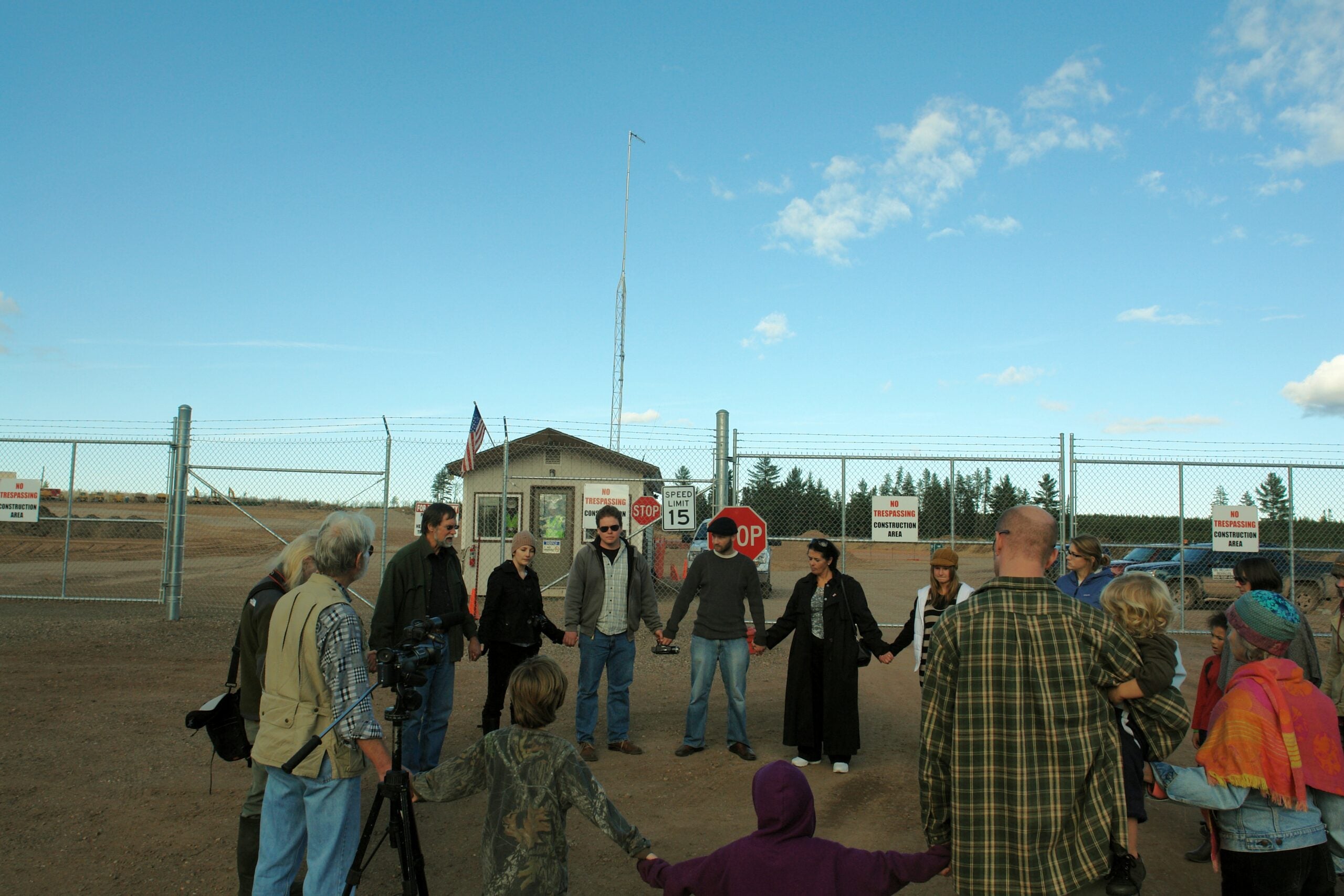An under-construction mine in Michigan, much like one proposed in Wisconsin, is pitting businesses against environmentalists and Native Americans.
The portal to the Eagle Mine – an underground nickel and copper mine being built near Marquette, Mich. in the Upper Peninsula – looks like a giant silver roadside culvert, stuck into the ground at a steep angle. Except for vehicle headlights, it’s pretty dark down in the tunnel, so it’s good to be careful before driving in.
Past safety chambers, ventilation units and other equipment are excavation areas called stopes. Mine employee Craig Collins says the valuable ore in the wall is worth some headaches to blast and drill out.
Stay informed on the latest news
Sign up for WPR’s email newsletter.
“It’s always loud and there are challenges, but you work through ’em,” he says. “At the end of the day, everyone goes home safe and you make money – and that’s what it’s all about.”
Back on the surface, there are questions as to whether Eagle Mine will be safe for the environment. It’s a sulfide ore mine, meaning there’s a risk that sulfuric acid could get into local ground and surface water, just a few miles from Lake Superior.
As he leads a tour of the mine’s waste water treatment plant, company spokesman Dan Blondeau insists safeguards are in place, enough to minimize damage when problems do pop up. As an example, Blondeau says they recently contained a sulfuric acid leak.
Jerry Maynard of the Superior Watershed Partnership and Land Trust says the jury is still out on the mining company’s promises to be careful.
“That’s what they say,” says Maynard. “That’s what the permit requires of course. But you can never have too much monitoring as a safety measure.”
The mine owners – the Lundin Mining Corporation, which bought the site from Rio Tinto Minerals – are taking the unusual move of helping fund the citizen monitoring. Maynard says that could be a model for northern Wisconsin, if the proposed Gogebic Taconite iron ore mine near Hurley gets close to starting up – though not everyone in the Upper Peninsula fully buys into that sort of partnership.
It’s easy to notice that only a chain link fence separates the mine from Eagle Rock – a sacred site to the Keweenaw Bay Indian Community, one of the Ojibwe tribes in the region. Tribal official Jessica Koski says tribal members can still worship at the rock, but says that their traditional practices are disrupted by the noise and viewshed.
Lundin says Eagle Mine will only operate for about eight years, and then the land next to Eagle Rock will be restored. Koski says the tribe questions the quality of the proposed reclamation and what worshippers will have to put up with in the meantime.
Wisconsin Public Radio, © Copyright 2025, Board of Regents of the University of Wisconsin System and Wisconsin Educational Communications Board.





